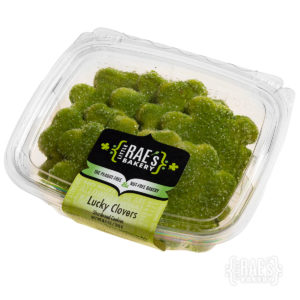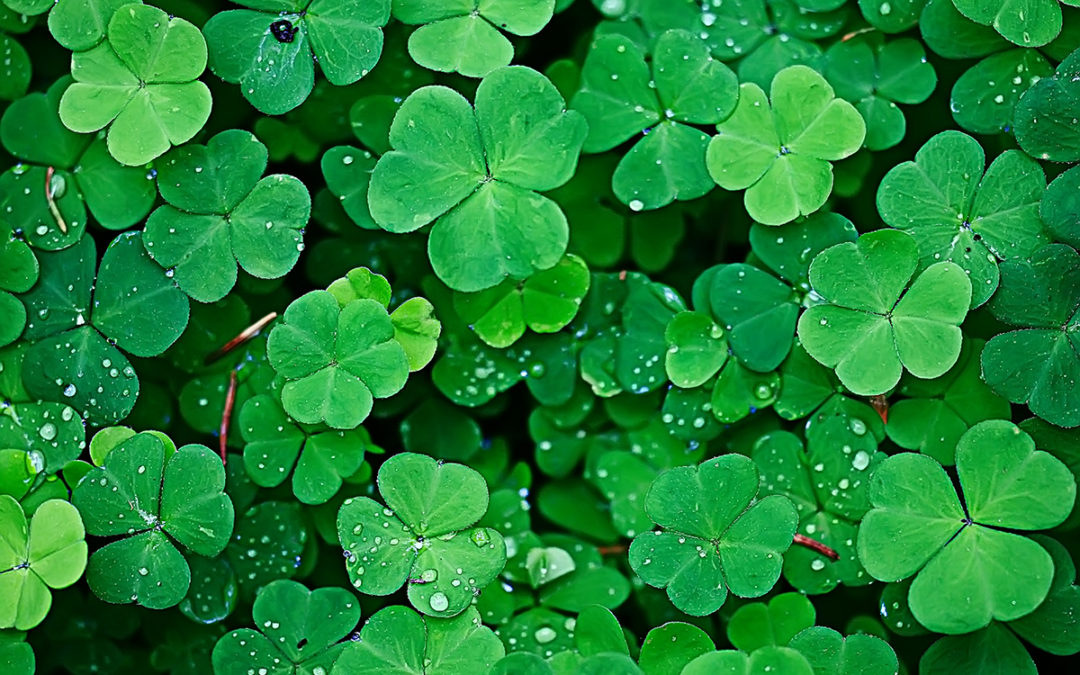You’ve got the streamers, the balloons, the shirt that says, “Kiss me, I’m Irish!”, and a pack of our decadent Lucky Clovers shortbread.
You. Are. Ready. For. St. Paddy’s. Day.
Or are you?
Before you get the party started, brush up on your Irish lore so you can impress your guests (or your kids) with your knowledge. Today’s topic? The difference between a shamrock and a clover.
Aren’t shamrocks and clovers the same thing? We’re so glad you asked.
Do you remember learning in math class about how all squares are technically also rectangles, but that rectangles are not necessarily squares? Shamrocks and clovers have a similar relationship to each other. One is a broader umbrella term (like rectangles) and one is more specific (like squares).
All shamrocks are clovers, but not all clovers are shamrocks
What’s a Clover?
“Clover” can refer to any of the approximately 300 species within the Trifolium family. The term “trefoil” also describes this family of plants and gives us a hint as to its literal meaning—the tri- or tre- prefix meaning “three” and the root –foil or -folium meaning leaf. Thus, trefoil plants are those that have a three-leafed structure.
Some of the most common clover species include strawberry clover, white clover, red clover, Swedish clover, Alsatian clover, and black clover.
What’s a Shamrock?
A “shamrock,” on the other hand, has some more specific parameters. The term itself comes from the Gaelic word seamróg, which literally means “little clover.” While there is not a 100% consensus, most botanists agree that a shamrock most likely refers to either the white clover (trifolium repens) or the suckling clover (trifolium dubium).
More than anything, the shamrock is a symbol for Ireland and St. Patrick’s Day. And notably, this symbol specifically has three leaves, not four. This particular point has to do with the lore around St. Patrick, who was a Christian missionary. The stories indicate that St. Patrick used the shamrock in his mission to demonstrate the principles of the Holy Trinity – three leaflets united by a common stalk.
But what about four-leafed clovers?
Since, by definition, a “normal” clover only has three leaflets, a clover with four leaflets is technically just a mutated clover. This mutation is quite rare, and Druids (priests of the ancient Celts) claimed that a four-leafed clover was a good luck charm against evil spirits. These days, most people have forgotten about the “evil spirits” part and just remember that they are supposed to be good luck.
Similar to how St. Patrick used the three leaves of the shamrock to explain the Holy Trinity, some people also believe that the four leaflets on a four-leafed clover represent faith, hope, love, and luck.

Little Rae’s Lucky Clovers shortbread pack
So, if you’re celebrating St. Paddy’s Day, remember that the shamrock is the symbol for the holiday and that it only has three leaves. The cookies in our Lucky Clovers pack have four leaves, so they are technically clovers… but if any of your guests complain about them not being shamrocks, we have a simple solution: just bite off one of those leaflets for yourself. Problem (deliciously) solved!
Like this piece? Check out our previous blog on the history of shortbread.
Want to dig deeper into the history and science behind today’s topic? Here are a few articles we used to research this topic:

